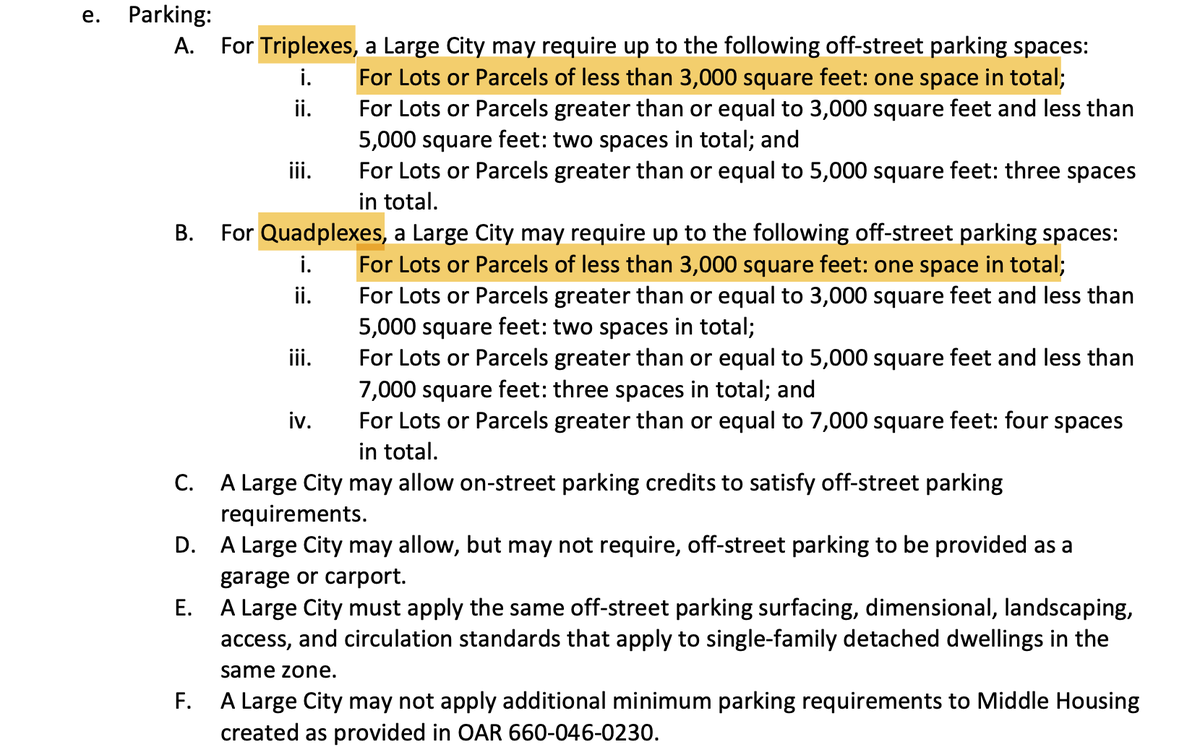
Last week, @California_HCD dropped long-awaited guidance about cities' duty to Affirmatively Further Fair Housing under state law. And a companion data tool.
This thread breaks it down. 1/24
hcd.ca.gov/community-deve…
…h-data-resources-cahcd.hub.arcgis.com
This thread breaks it down. 1/24
hcd.ca.gov/community-deve…
…h-data-resources-cahcd.hub.arcgis.com
Background: federal law since 1980s has required cities (as condition of CDBG funding) to make and implement desegregation plans. The plans were a joke. 2/24
gao.gov/products/gao-1…
gao.gov/products/gao-1…
In 2015, HUD under Obama issued the Affirmatively Furthering Fair Housing rule to strengthen analytical and programmatic components of the plans. 3/24
federalregister.gov/documents/2015…
federalregister.gov/documents/2015…
Signaling seriousness, HUD rejected about 1/3 of initial plans submitted pursuant to the new AFFH reg. 4/24
dusp.mit.edu/sites/dusp.mit…
dusp.mit.edu/sites/dusp.mit…
But then Trump became President and put AFFH on ice. 5/24
bloomberg.com/news/articles/…
hud.gov/press/press_re…
bloomberg.com/news/articles/…
hud.gov/press/press_re…
California responded by codifying the Obama-era AFFH regulation as state law. And did so with a twist, since CA (unlike the U.S.) has a framework in place to make cities plan for fair share of regionally needed housing. 6/24
The new CA AFFH statutes require regional "councils of govts" to weigh segregation and access to opportunity when divvying up regional housing target among cities in the region. 7/24
leginfo.legislature.ca.gov/faces/billText…
leginfo.legislature.ca.gov/faces/billText…
And cities must include an AFFH analysis and program in "housing element" of general plan, through which city shows how it will accommodate its share of the regional housing target. Housing elements are s/t review & approval by @California_HCD. 8/24
leginfo.legislature.ca.gov/faces/billText…
leginfo.legislature.ca.gov/faces/billText…
The integration of AFFH into Housing Element Law makes AFFH *potentially* more impactful under state law (than federal law), because... 9/24
1) housing elements distribute city's housing target to sites, providing focal point for AFFH analysis, and
2) cities w/o compliant housing element forfeit significant control over local land use. 10/24
2) cities w/o compliant housing element forfeit significant control over local land use. 10/24
Whereas HUD's AFFH rule afforded little leverage over rich, exclusionary suburbs (which don't rely on federal block grants tied to AFFH compliance), those 'burbs sure won't like the consequences of noncompliance with Housing Element Law. 11/24
https://twitter.com/CSElmendorf/status/1338979405079531521
So, to meat of the matter, what's in the new AFFH guidance?
First, cities must *quantify* their distribution of the housing target across census tracts or block groups scored by SES, race, etc., and show that distribution is net-positive for fair housing. 12/24
First, cities must *quantify* their distribution of the housing target across census tracts or block groups scored by SES, race, etc., and show that distribution is net-positive for fair housing. 12/24
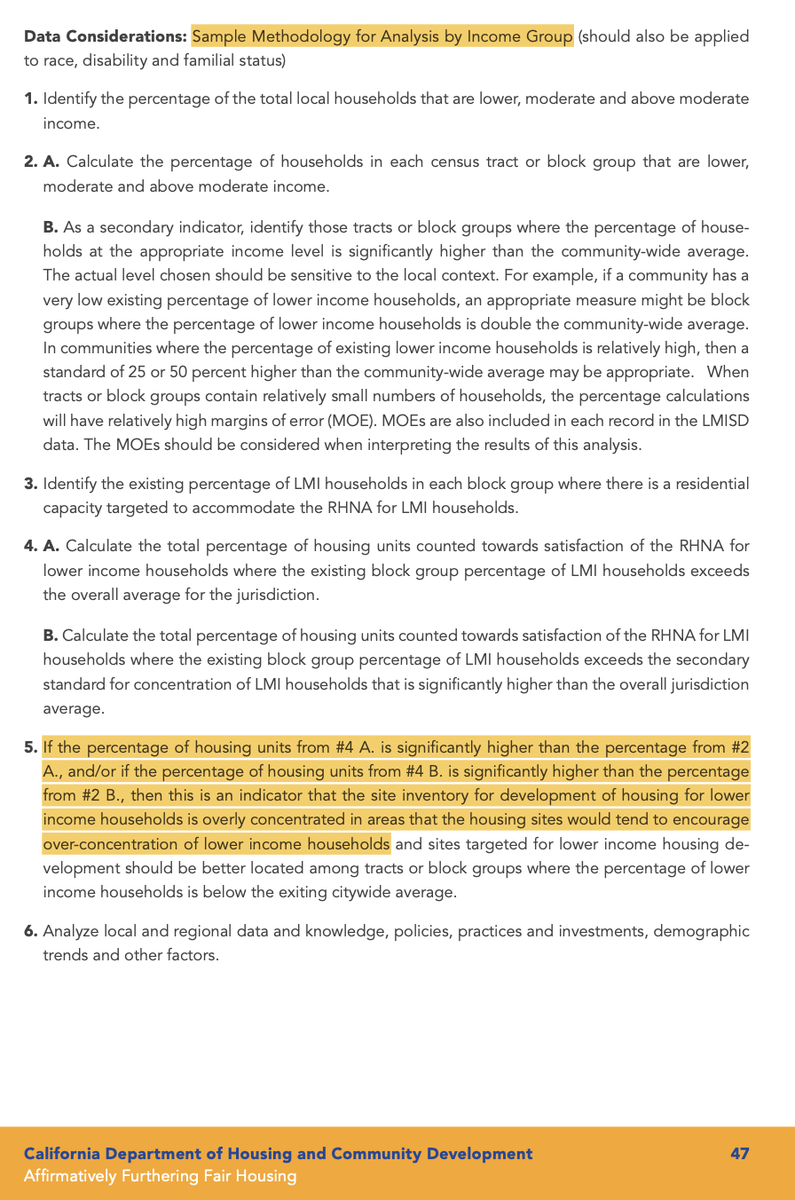
This is a big deal b/c ~40% of "capacity" must be provided on sites zoned for multifamily housing at statutory densities (30 du/acre), and so for first time cities won't be allowed to locate all that capacity in poor / low-demand neighborhoods. 13/24
Second, cities must use HCD's online data tool to analyze segregation, geographic concentrations of affluence / poverty, etc., both within city *and by comparing city to metro region.* 14/24 
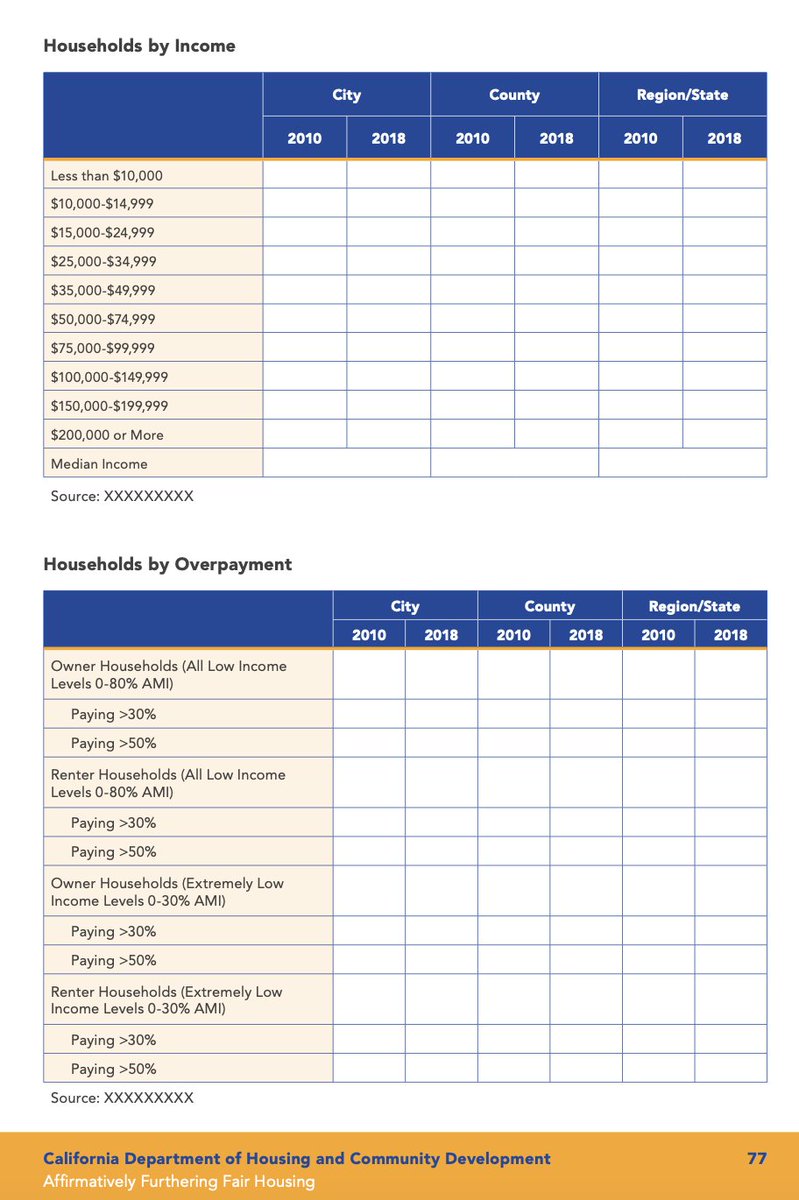
(The regional comparison is key, b/c econ. segregation w/in regions has been rising for decades.) 15/24
mdpi.com/2076-0760/7/8/…
mdpi.com/2076-0760/7/8/…
Third, echoing HUD's AFFH rule, cities are asked to identify *and prioritize* a small number of "contributing factors" (presumed causes of fair housing problems), which city's plan shall tackle. 16/24
Finally, city must adopt concrete programs to meliorate the contributing factors, with timelines for implementation, measurable outcomes & clear prioritization.
"Continuation of past actions" is not enough. 17/24


"Continuation of past actions" is not enough. 17/24
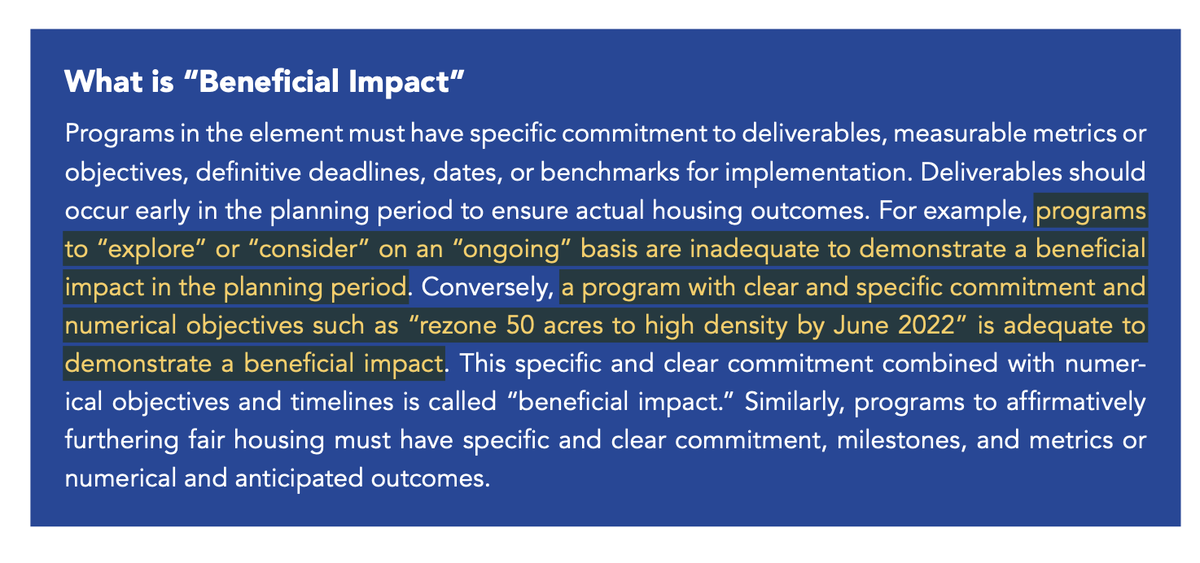
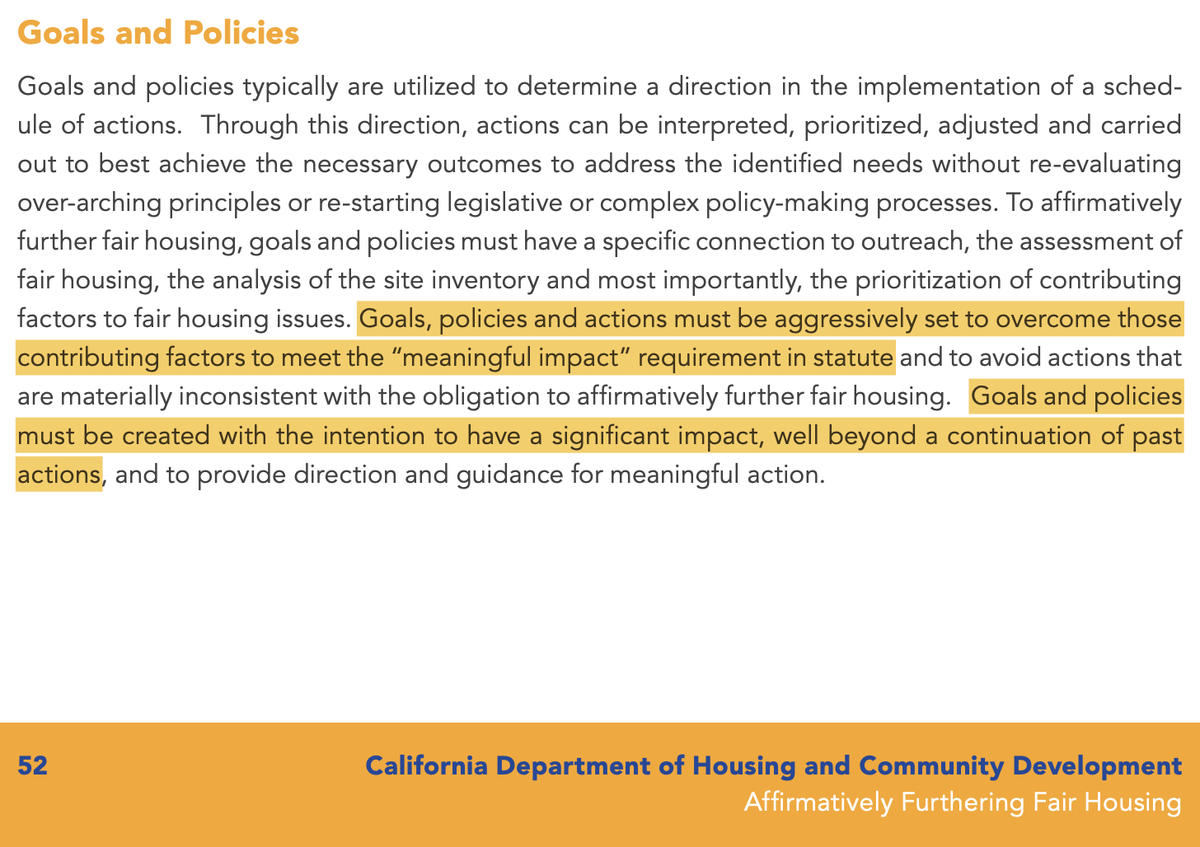
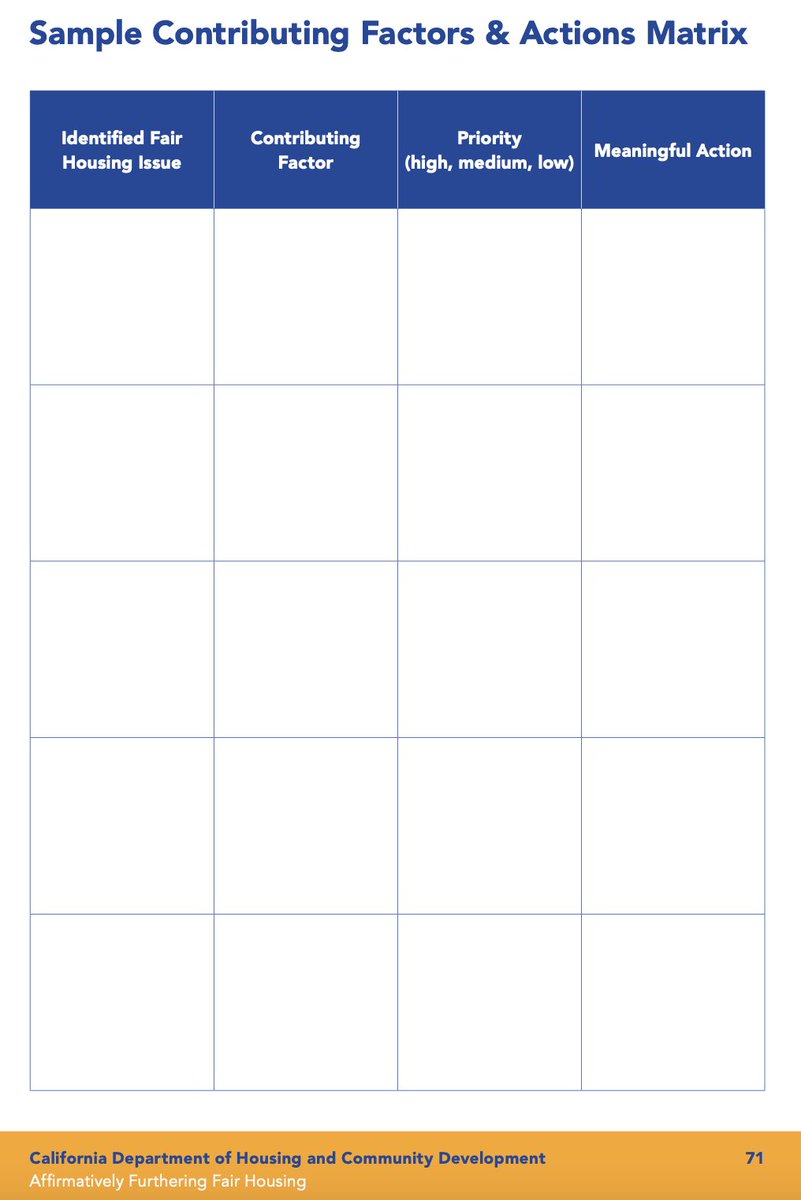
Now, to my assessment. On balance the new guidance is very good. I had feared that breadth of statutory language would mean cities could do almost anything (& thus almost nothing), call it their AFFH program, and be certified as compliant. 18/24 

But w/formula for quantifying distribution of multifamily site, and w/ strong signals that cities must address land use regs in their AFFH program, HCD is warning cities not to treat AFFH as just paperwork or an expressive nod to racial equity and socioeconomic mobility. 19/24 
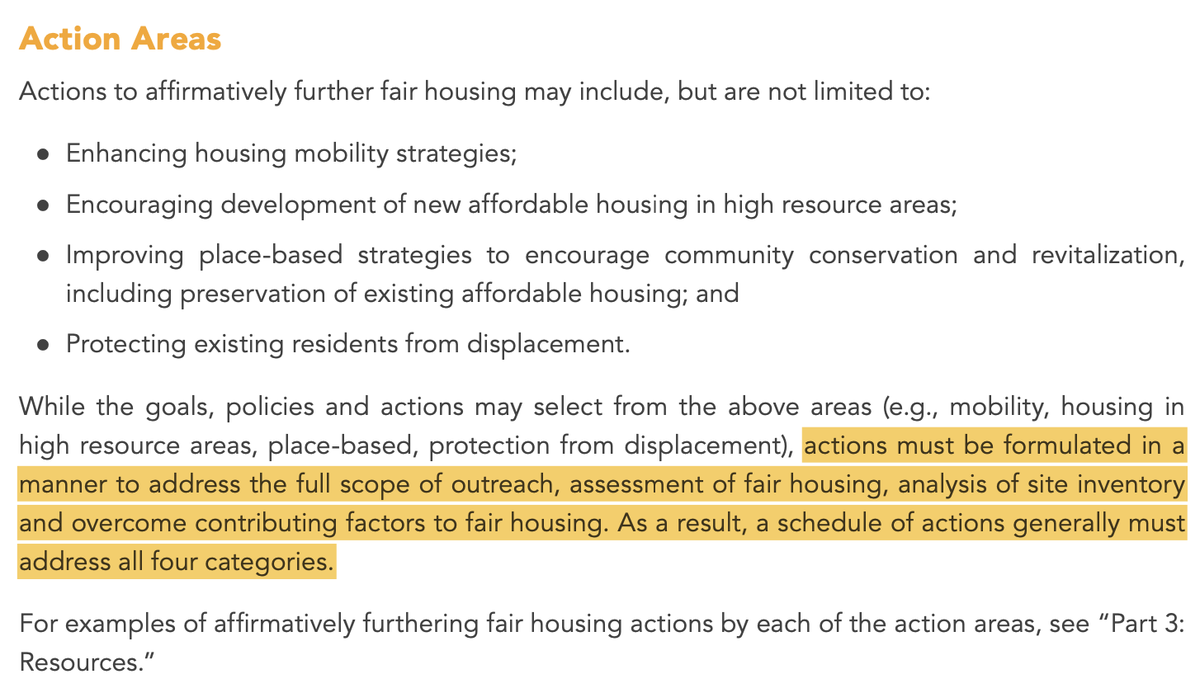
The data tool is also a big step toward state control over analytical side of housing elements (which also includes analysis of site capacity & constraints). This will make it harder for cities to hide their bad practices. 20/24 papers.ssrn.com/sol3/papers.cf…
My principal criticism is that guidance doesn't follow its own advice about prioritization. The data tool has too many layers (while, oddly, omitting @OppInsights's tract-level index of intergenerational class mobility), & the demands for new types of analysis go on and on. 21/24
Most concerning, the menu of suggested AFFH actions is as much a grab bag of interest-group wishes as recs based on research. Who knew that local-hire mandates were an AFFH strategy? 22/24 
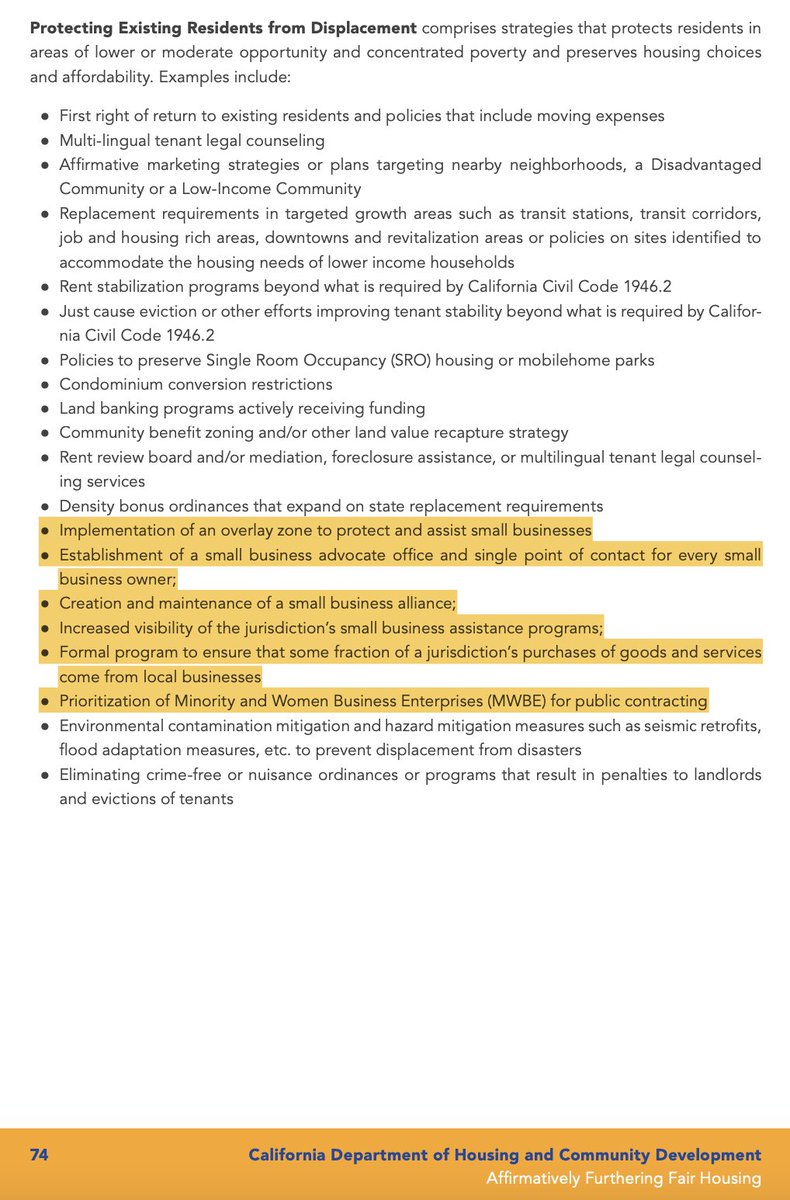
Quibbles aside, I think HCD's AFFH guidance & tool will provide terrific reinforcement for local organizing around fair housing & rezoning of single-family neighborhoods. 23/24
https://twitter.com/gleamdavis/status/1377184747596615686
Thanks, @GVelasquez72 & team! @Yimby_Law @AbundantHousing @_jesmcbride @electwizard @anthonydedousis @CamnerLeonora @hanlonbt @louismirante @dillonliam @JerusalemDemsas @emilymbadger @urbenschneider @sarabronin @kookie13 @RickHills2 @ProfSchleich @MWildeAnderson 24/24
@metrosolomon @loridroste @RafaelMandelman @AlexFischCC @cayimby @SMenendian @BenTMetcalf @jenny_schuetz @ebwhamilton @salimfurth @RichSchragger @davidson_nestor @ONeillMoiraK @LISC_SD @SCANPH @elpaavo @mlevinreports @JalbyMD
• • •
Missing some Tweet in this thread? You can try to
force a refresh

